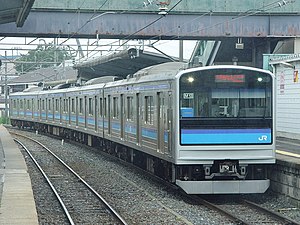ALC Rail Writer
Engineer
Full Faux News story here...NOBIRU, Japan -- A passenger train with an unknown number of people aboard was unaccounted for Friday in tsunami-hit coastal Japan, according to Kyodo News.
The East Japan Railway Co. train was running near Nobiru Station on the Senseki Line connecting Sendai to Ishinomaki when a massive quake hit, triggering a 10-meter (33-foot) tsunami, the report said, quoting police sources.
CNN reporting that four trains were missing, three Southbound to Tokyo and one Northbound. Heard it there, but Fox had the only online article I could find.
Last edited by a moderator:












